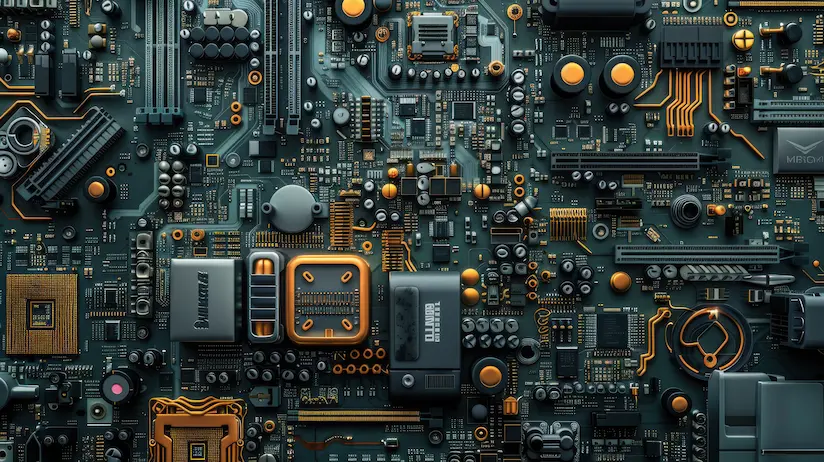
India’s electronics industry is rewriting its future, one partnership at a time
Strategic Decoupling: India’s Bold Break from Beijing
India’s Electronics Revolution – India’s electronics sector is in the midst of a tectonic shift. Once heavily reliant on Chinese imports and collaborations, domestic manufacturers are now actively distancing themselves from Beijing. This strategic decoupling is driven by a mix of geopolitical caution, regulatory hurdles, and a desire for supply chain resilience.
The catalyst? Press Note 3, a policy introduced after the 2020 border conflict, mandates multi-ministerial clearance for Chinese investments. This bureaucratic bottleneck has made Chinese partnerships slow, uncertain, and increasingly unattractive. Add to that China’s recent restrictions on rare earth magnet exports, critical for electronic components and the urgency to diversify becomes undeniable.
Leading Indian firms like Dixon Technologies, Amber Enterprises, Optiemus, and PG Electroplast are now forging joint ventures with South Korean, Taiwanese, and Japanese companies. These alliances are not just about avoiding China, they’re about building a future-proof ecosystem that can withstand geopolitical shocks.
Amber Enterprises, for instance, is submitting a ₹4,000 crore proposal under India’s electronics component manufacturing scheme, including a ₹3,000 crore joint venture with Korea Circuit for semiconductor substrates. Dixon Technologies is finalizing terms with Korean and Taiwanese partners, while Optiemus is prioritizing Taiwanese collaborations for display and PCB technologies.
Building a Resilient Supply Chain: Allies and Alternatives
India’s pivot is not just reactive, it’s visionary. The government’s ₹22,919 crore electronics component manufacturing scheme aims to attract ₹59,350 crore in investments and produce goods worth ₹4,56,500 crore. The goal? To boost domestic value addition from 20% to 35-40% and create over 91,600 direct jobs.
This initiative is catalyzing a wave of proposals focused on sound components, PCB assembly, and display systems. Epack Durable, for example, is working on ₹300 crore worth of applications with non-Chinese partners. Even firms serving Chinese brands are reevaluating their supply chains, coordinating with clients before finalizing applications.
The shift is also strategic in terms of technology transfer. South Korea and Taiwan bring advanced capabilities in semiconductors, PCBs, and display modules, areas where India seeks to deepen its expertise. These partnerships are expected to accelerate India’s climb up the value chain, moving from assembly to design and innovation.
Moreover, this realignment aligns with global trends. As companies worldwide adopt “China+1” strategies to mitigate risk, India is emerging as a preferred destination for electronics manufacturing. Its skilled workforce, robust policy support, and growing infrastructure make it an attractive alternative to China’s dominance.
Geopolitics Meets Industrial Policy: A New Tech Power Rises
India’s electronics renaissance is not happening in isolation; it’s part of a broader geopolitical recalibration. The West’s push to position India as a counterweight to China is gaining traction, and the electronics sector is at the heart of this strategy.
China’s export restrictions on rare earths, used in everything from EVs to missiles, have exposed the fragility of global supply chains. India, which currently depends on China for over 90% of rare earth processing, is now racing to develop its own capabilities. The stakes are high: without these materials, India’s ambitions in defense, mobility, and high-tech manufacturing could stall.
The government’s response has been swift and strategic. Initiatives like the India Semiconductor Mission, PLI schemes, and SPECS are pumping billions into infrastructure, R&D, and talent development. Collaborations with global giants like Foxconn, Micron, and Tata Electronics are bringing cutting-edge technology and investment to Indian shores.
This transformation is also cultural. Indian manufacturers are shedding their low-cost, high-volume image and embracing innovation, quality, and sustainability. The launch of Venture Access Labs by ICEA, in partnership with Caret Capital, is connecting Indian firms with global startups in AI, IoT, and advanced manufacturing, ushering in a new era of tech-led growth.
Conclusion:
India’s electronics sector is no longer just a cog in the global supply chain, it’s becoming a driver of strategic autonomy and industrial excellence. By breaking away from Beijing and embracing trusted allies, India is not only safeguarding its economic future but also asserting its place in the global tech order. The message is clear: the age of dependency is over, and the era of resilience has begun.
Stay updated with the latest news on Rapido Updates. Keep yourself updated with The World, India News, Entertainment, Market, Automobile, Gadgets, Sports, and many more